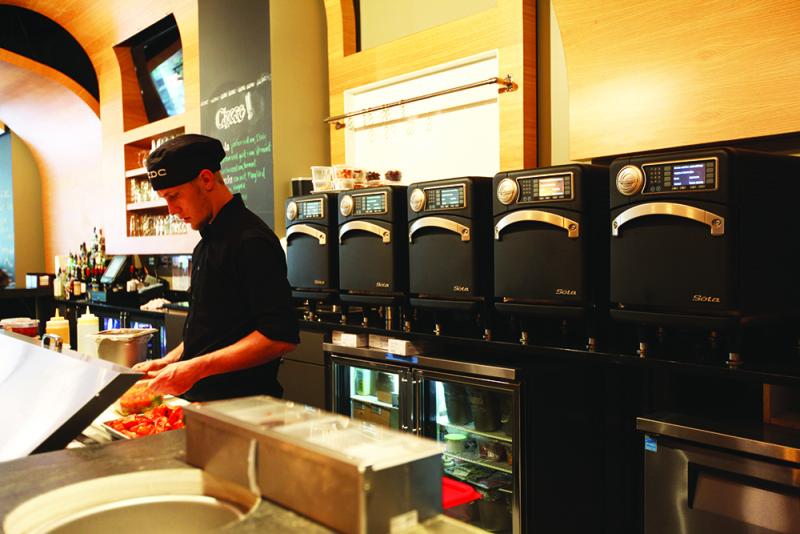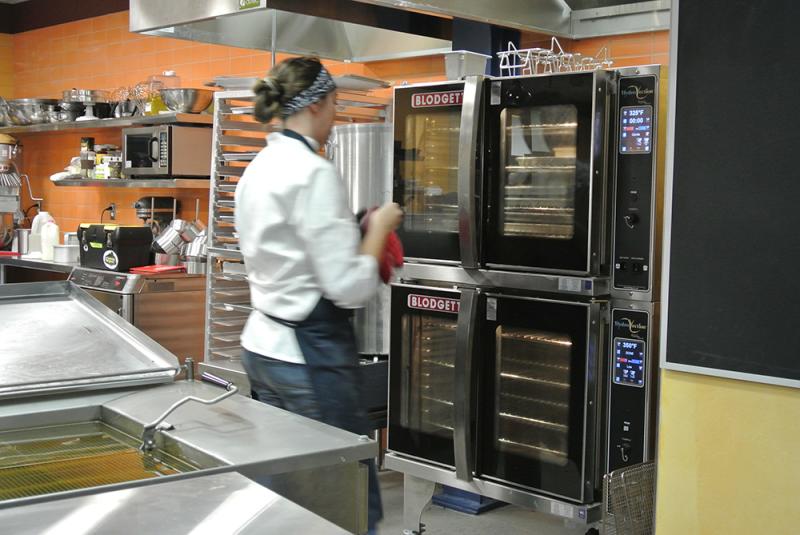The debate about gas versus electric stoves heated up in 2023 as opposing sides fought over possible bans on gas stoves. A federal ban seems unlikely as the House passed the Gas Stove Protection and Freedom Act over the summer, which would bar the Consumer Product Safety Commission from banning gas stoves. And the Senate added language via the Save Our Gas Stoves Act, which prevents the Secretary of Energy from implementing energy conservation standards if the standards result in the unavailability of a product because of the type of fuel it uses.
Still, some states are taking matters into their own hands. For example, stemming from concerns over health and emissions, New York will require all-electric heating and cooking in new buildings shorter than seven stories by 2026 and for taller buildings by 2029. Berkeley, California was the first place to ban gas stoves or hookups in new construction in 2019, but the law was overturned this spring as it was found to be in direct violation of the Energy Policy and Conservation Act of 1975.
Even as the debate rages on in the halls of Congress and state legislatures, the reality is the future is looking a lot more electric.
Ventless Equipment Can Now Do It All
“Is it ever going to turn to be 100% electric? No, I don't believe that,” says David Shave, senior vice president Global Sales and Distribution for TurboChef, CookTek, and Middleby Marshall.
Shave says it’s more about educating the buyer that they can still cook the same way they’re used to on electric as the equipment has made major progress in recent years. “We are using traditional equipment, that equipment is just now ventless,” he says. “A combi oven is a traditional piece of cooking equipment, it can just now have a ventless option. You’re not sacrificing anything, you’re just adding something to the portfolio of products that’s now a ventless option.”
Scott Heim, president, Ventless Solutions, The Middleby Corporation, agrees, “Whatever you want to do on the menu, you can now cook on electric, and you're not sacrificing anything.”
Middleby says the true catalyst to understanding is getting people to actually use the equipment—cooking is believing in this case. “[We] get them to a Middleby Innovation Kitchen,” says Heim. “They have to cook because they have that myth, this misconception that it's all about BTUs.”
It seems this technique is working as Middleby has successfully installed just under 400,000 ventless cooking units in restaurants globally over the past 15 years.

Efficiency, Energy, & Environment
When it comes to energy output, Middleby argues that electric equipment is actually more efficient than gas and BTUs. “You look at the power you need to run induction versus the power you need to run gas. All you’re doing is just emitting energy into the atmosphere if you’re using gas,” says Shave. “If you're using gas, you're only getting 35% of that energy into the piece of equipment. You're getting close to 90% of energy that is produced by [electric] induction going into the food.”
By switching to electric, utility bills can also be reduced as a facility's heat and air conditioning is not escaping through a hood, making the systems have to work harder to maintain temperature. “So the utility bills can be reduced, not zeroed out, but mitigated. We can bring it down,” says Heim. “You still have to have appropriate HVAC, but it's not like you're pumping it out through the roof all day and night.”
When cooking with gas, all of the grease, odors, and particulates pumped out through the hood also have to be considered as they don’t disappear—they enter the atmosphere. In dense urban areas, this is especially a concern as the pollution can enter nearby high-rise buildings through open windows and vents. Regulations have been put in place to help limit such emissions in these areas, but they aren’t a concern when cooking with electric as the fats, oils, and grease are obliterated.
In fact, Middleby has redefined the limits of ventless cooking equipment with its latest product launch of the Evo® VentCore™ Universal Hood. This unique innovation recently received UL approval for ventless operation of electric cooking appliances and can handle high-volume output from equipment such as the Taylor® double-sided grill, Nieco® chain broiler, and Pitco® fryers. The advanced filtration system of the VentCore Universal Hood captures and obliterates fats, oils, and grease during the cooking process and eliminates cooking odors too. This technology will be debuted at the Bar & Restaurant Expo in March.
Cost Savings
Aside from efficiency, energy, and environmental benefits, ventless electric cooking equipment can also result in cost savings.
“There’s always going to be an upfront, increased capital cost with ventless equipment,” says Shave. “But you’re eliminating a hood.”
And with average hood expenses coming in at $2,000 a linear foot (before installation, the need to penetrate the roof, and running and cleaning costs, the price quickly adds up. By eliminating the cost of a hood entirely, ventless equipment can easily save an operator in the long run.
Shave also points out the ability of ventless equipment to create revenue streams that weren’t previously possible. “There's the ability to put an operation in where you simply couldn't put an operation in before,” he says. “How much revenue are you generating from that space?”
Heim points out that the flexibility in design afforded by ventless equipment enables operations to be placed in prime traffic locations. This not only leads to an increased chance of catching foot traffic, but also an increased convenience for consumers. “Operators can create and open restaurants in sites and locations that match the consumer flow in a grocery store, or passengers racing to flights in an airport, or fans trying to grab a quick meal and drink and return to their arena seat,” he says. “What Middleby can do with our ventless portfolio is we can create pockets of revenue essentially anywhere. And we can make dead spaces an area for F&B.”

Automation & Control
Ventless equipment also provides a bevy of benefits thanks to automation. “When we talk automation, it's not the fancy science-fiction robotic stuff. It's things to make operations easier,” says Heim.
Think simple controls and features like conveyor belts or prompts for a user to perform an action (i.e., add cheese, flip burger). Some equipment doesn’t even require operators to flip the food—cutting down on cooking time and reducing worries about food safety.
Automation also enables menu and recipe changes to be performed quickly easily by simply inputting the information through the display on products like TurboChef and Blodgett.
Connectivity brings this all one step further for chains or multi-unit locations where enterprise-wide menu changes can be more daunting. Thanks to Middleby’s Open Kitchen from Powerhouse Dynamics, an IoT-based solution, equipment can be connected across locations so that changes happen in the press of a button. It’s open interface also allows for users to connect and monitor equipment across brands, so that non-Middleby equipment can be brought onboard as well.
Users are not only able to input data into the software, they are able to pull data from it as well. This provides operators with invaluable insights into equipment usage and performance so they can make adjustments to be more efficient and profitable. Information like this will also be helpful to operators in the future as regulations on emissions start to be passed. One example is the delayed Securities and Exchange Commission’s proposed climate disclosure rule, which would require companies to report their greenhouse gas emissions and environmental risks.
How to Choose the Right Ventless Equipment
With so many ventless equipment options available, how does an operator choose what’s right for their establishment?
Middleby says there are three factors to consider: menu, volume, and location.
Menu. Consider your menu and what you are going to need to cook—this will dictate the type of equipment your establishment requires whether that’s a griddle, fryer, combi oven, or something else.
Volume. What’s the demand at your venue? Do you have large volumes and a need for speed? Are there certain dayparts that are busier, requiring more from specific pieces of equipment?
Location. What type of square footage are you working with? Are you in a non-traditional space that requires a ventless solution?
By considering these three factors, you’ll be able to land on the ventless equipment that’s perfect for your operation.
Are you registered for our Crave and Crave on the Menu newsletters? Sign up today!
Plan to Attend or Participate in the 2024 Bar & Restaurant Expo, March 18-20, 2024
To learn about the latest trends, issues and hot topics, and to experience and taste the best products within the bar, restaurant and hospitality industry, plan to attend Bar & Restaurant Expo 2024 in Las Vegas. Early bird registration is now open!
To book your sponsorship or exhibit space at the 2024 Bar & Restaurant Expo, contact:
Veronica Gonnello (for companies A to G) e: [email protected] p: 212-895-8244
Tim Schultz (for companies H to Q) e: [email protected] p: 917-258-8589
Fadi Alsayegh (for companies R to Z) e: [email protected] p: 917-258-5174
Also, be sure to follow Bar & Restaurant on Facebook and Instagram for all the latest industry news and trends.
